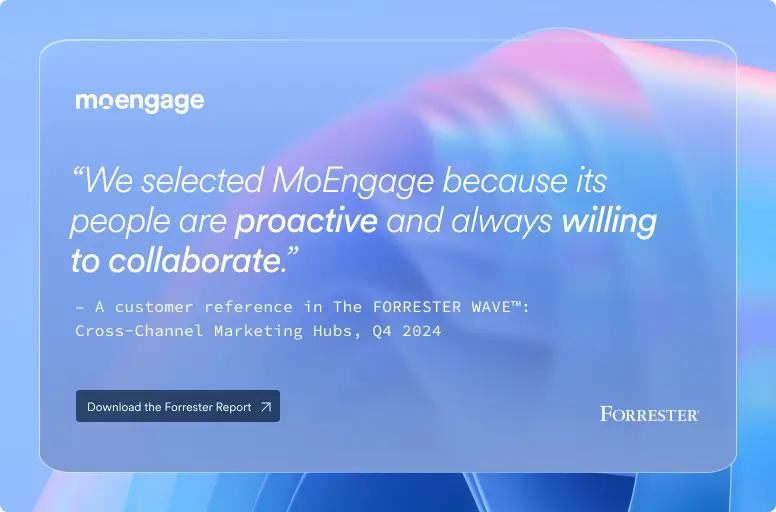The world we knew no longer exists. People avoid crowds, stay more at home, visit offline stores less, and shop online more. Compelling and relevant digital experiences have now become a sought-after alternative.
To put numbers against it, 53% of all global web traffic occurs on mobile phones. Smartphones are an integral part of how users consume content, more so in the post-COVID world. To no great surprise, 98% of social media activities and 80% of video streams stem from mobile devices.
In this video, Michael Ricci, VP of Business Development & New Technology at Sinch, walks us through how mobile customer experiences have disrupted consumer behavior in the COVID-19 transformed world. You can watch the video recording or if you prefer to read, take a look at the summary below.
Changing Consumer Expectations and the Opportunity Gap
Consumers are on the lookout for responsive and collaborative interactions from the brands they trust. They seek communication via messaging apps with an option to shop through them. The demand for mobile-first communication is soaring, with consumers preferring mobile-friendly experiences. The accelerating trend in the customer experience landscape also opens the opportunity gaps for businesses to fill in.
Financial services companies must focus on streamlining their process and offer digital solutions to consumers via interactive mobile channels. For instance, about 78% of consumers find health notifications useful, while only 14% have used them, exposing a gap of 64% of consumers to fill.
1. The Need for Personalization and Real-time Shopping Experiences
Consumers seek personalized experiences from their brands. And numbers vary with different generations. More than 60% of Gen Z and Millennials welcome personalization, and a minority lies with Boomers. The need for real-time shopping experiences has also shot up during the pandemic. Since consumers are avoiding offline visitations to stores, the demand for creating a life-like on-demand shopping experience has boomed.
They are looking for newer ways to search, shop, and pay online. Sinch’s research also found out that a whopping 92% of people first run a search to find out a product’s availability before visiting a store.
2. Demand for Rich Communication Services (RCS) and the Decline of Apps Usage
RCS based experiences are unmistakably the preferred way consumers are looking to shop online. The quest for richer, convenient, and more visual ways to search, scroll, and the shop is escalating. 82% of Gen Z and Millennials find RCS useful, followed by 75% of Gen X.
While interactive dialogue and conversations are on the rise, consumers spend time on fewer apps each day. The research enlightened the meager usage of apps – 50% of smartphone users did not download any app in the past 30 days, while more than 55% of a user’s time on a smartphone is spent on text messaging.
How Can Your Brand Engage Consumers to Deliver Quality User Experiences?
Michael discusses the need to reach and engage consumers where they are. Text apps are the most widely used modes of communication. Reiterating on the popularity of messaging, the most used text apps where businesses can engage their consumers are Whatsapp (2 billion active users) and Facebook Messenger (1.3 billion users). Followed by WeChat (1.2 billion users), Viber (0.26 billion users), Line, and KakaoTalk (0.52 billion users).
Is Your Brand Engaging and Persuasive?
As established in the beginning – relevance is the key. Brands need to move away from the one-size-fits-all approach. Every customer is different, which is why brands need to connect with their audience through targeted content.
Text messages have one of the highest rates, with a user typically acting on a text notification within a 3-sec range. Meanwhile, by blending pictures, videos, or a rich feature, you can have an impact 15x more powerful. When you take your communication a notch up with conversational messaging, your brand can have a staggering 40x more impact on the user.
It’s never been a better time for brands to capitalize on next-gen messaging tactics to deliver their customers with all-inclusive and vivid brand experiences. Give your customers a mode to talk to your brand; a medium to reach out to have their questions answered.
Consequently, your brand is likely to get more conversions and result in better customer retention.
Great Mobile Customer Experiences Are a Game-Changer for Your Brand
Most consumers’ first searches start from their phones. Whether they are interacting with your brand for the first time or are coming back for more – mobile phones, have sent shock waves to digital consumerism.
1. Develop a Competitive Advantage
When a brand focuses on augmenting mobile CX, it gets an opportunity to stand out from the ground. With fierce competition in the market, your brand can no longer solely differentiate itself based on price or uniqueness. It’s the quality of the relevant brand experience that you deliver that gets noticed.
Interact with your consumers on-the-go and make sure you’re available at every touchpoint of their buyer journey.
2. Drive Revenue, Lower Cost and Customer Churn
It’s all about cultivating meaningful relationships and offering them immersive experiences to your customers.
Logically, delivering superior CX can help your brand generate more revenue. This increase can lie anywhere between 30 to 50% more than a standard SMS/email campaign.
CX can also help brands reduce their customer care and marketing costs. Conversational messaging can employ AI-powered automated responses, which reduce the reliance on the human workforce. And customers are more likely to stay loyal to your brand when they feel fulfilled, thereby reducing the churn rate.













